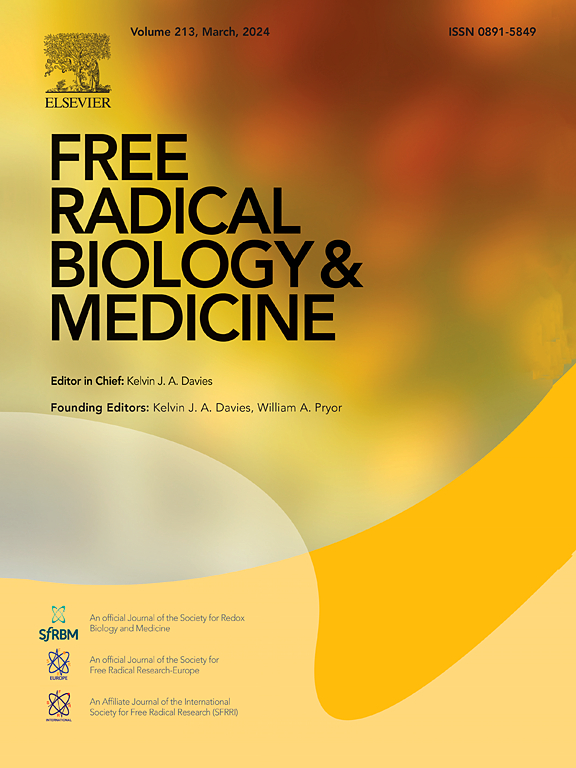Astragalin actives autophagy and inhibits apoptosis of astrocytes in AD mice via down-regulating Fas/Fasl-VDAC1 pathway
IF 7.1
2区 生物学
Q1 BIOCHEMISTRY & MOLECULAR BIOLOGY
引用次数: 0
Abstract
Alzheimer's disease (AD) as a common neurodegenerative disease, which characterized by amyloid Aβ deposition and neurofibrillary tangles. Astragalin (AST), a natural flavonoid, has anti-inflammatory, antioxidant, anti-cancer, and other pharmacological effects. Astrocytes can phagocytize and degrade Aβ in their vicinity. In this study, we used the AD mice model established by injecting the mixture of Aβ1-42 and Aβ25-35 into the CA1 region of the hippocampus, and C8D1A cells injured by Aβ1-42 to explore the neuroprotective effects of AST. Our findings showed that AST enhances learning and cognitive ability of AD mice, reduces Aβ deposition and neurofibrillary tangles in the brain, and improves the structural morphology of hippocampal nerve cells. Furthermore, AST promoted autophagy and suppressed apoptosis of astrocytes in the AD model. Additionally, AST inhibited the expression of proteins associated with the Fas/Fasl-VDAC1 signaling pathway, while autophagy inhibitor chloroquine (CQ) or apoptosis agonist phenoxodiol reversed above change. Interestingly, consistent with the action of pathway Fas inhibitor KR-33493, AST could activate autophagy of Aβ1-42 injured C8D1A cells while inhibit their apoptosis. In conclusion, AST activated autophagy and inhibited apoptosis of hippocampal astrocytes in AD mice, ameliorating animal cognitive deficits by down-regulating Fas/Fasl-VDAC1 signaling pathway. Thus, this study provided a new perspective and experimental foundation for developing AD treatment drugs.

求助全文
约1分钟内获得全文
求助全文
来源期刊

Free Radical Biology and Medicine
医学-内分泌学与代谢
CiteScore
14.00
自引率
4.10%
发文量
850
审稿时长
22 days
期刊介绍:
Free Radical Biology and Medicine is a leading journal in the field of redox biology, which is the study of the role of reactive oxygen species (ROS) and other oxidizing agents in biological systems. The journal serves as a premier forum for publishing innovative and groundbreaking research that explores the redox biology of health and disease, covering a wide range of topics and disciplines. Free Radical Biology and Medicine also commissions Special Issues that highlight recent advances in both basic and clinical research, with a particular emphasis on the mechanisms underlying altered metabolism and redox signaling. These Special Issues aim to provide a focused platform for the latest research in the field, fostering collaboration and knowledge exchange among researchers and clinicians.
 求助内容:
求助内容: 应助结果提醒方式:
应助结果提醒方式:


